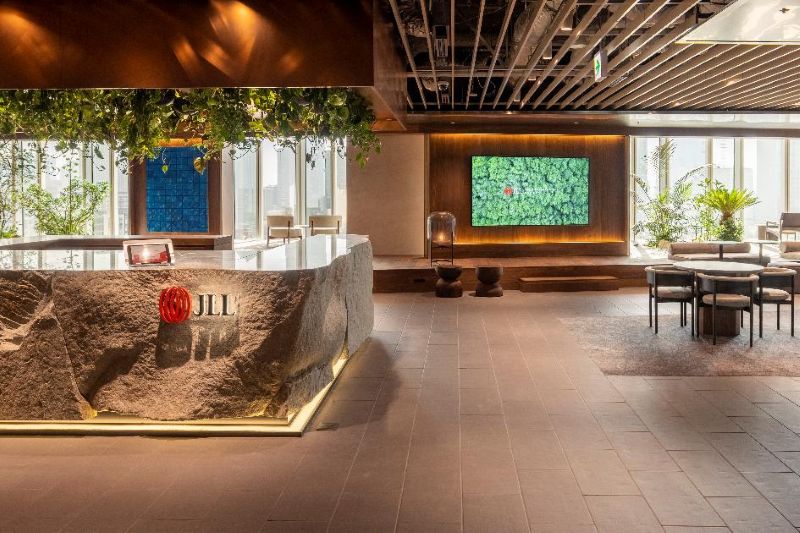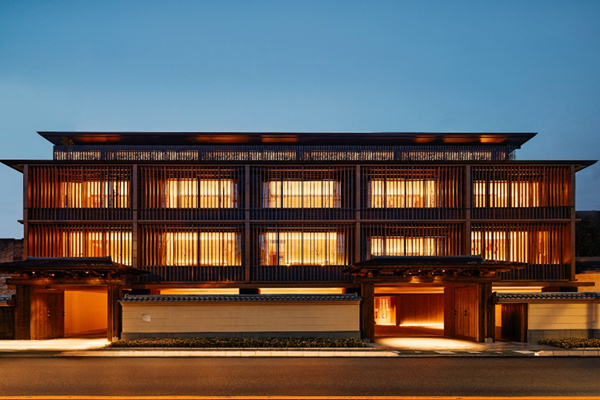
Project Name:Aquila
City:Saitama
Rating System:LEED v4 BD+C:Core and Shell
Last certified on: September 3, 2024
Certification level: Certified
Interviewee: Junko Miyamoto from Lendlease Japan, Inc
Interviewer: Makoto Hashimoto from Green Building Japan
Mr. Makoto Hashimoto of Green Building Japan recently sat down with Ms. Junko Miyamoto, Senior Project Manager of the Construction Department at Lendlease Japan, Inc, to discuss the data center project “Aquila,” which achieved LEED certification last September.

Green Building Japan Makoto Hashimoto (referred to as ‘Makoto’ hereafter) :
What motivated the decision to pursue LEED certification for a data center project?
Lendlease Japan, Inc. Junko Miyamoto (referred to as ‘Junko’ hereafter):
Lendlease has developed a comprehensive sustainability framework with ambitious goals that guide various initiatives across our assets. Specially, in terms of environmental impact, we have launched the ‘Mission Zero’ initiative. As outlined in our proprietary roadmap, we are committed to achieving carbon neutrality for Scope 1 and 2 emissions by 2025, and eliminating all CO2 emissions (Scope 1, 2, and 3) by 2040.
Obtaining LEED certification is a key action of this commitment. LEED is a globally recognized standard among the many green building rating systems, making it essential for our development projects worldwide. In fact, LEED certification is also a mandatory requirement for our projects in Japan.
Makoto:
What were the main challenges you faced in pursuing LEED certification?
Junko:
For this project, we selected the LEED BD+C: Core and Shell rating system because the interior work was designated as tenant construction. Due to the delineation of construction responsibilities between us and the tenant, the scope of work under Core and Shell was limited, and the building was handed over to the tenant in nearly a shell condition. As a result, our ability to pursue a broad range of credits was restricted, which made it challenging to determine how we could effectively earn points.
For “Optimize Energy Performance” credit category, given the shell condition, improving the thermal insulation of the building envelope was one of the few measures we could implement ourselves. Initially, we were concerned that this measure alone would not be sufficient to meet the prerequisite. However, after discussing our approach with the tenant, we gained their understanding and support to include the high-efficiency chiller they installed in the energy reduction calculations. This collaboration allowed us to establish a path to meet the energy reduction requirements.
We believe that attracting tenants who shared our commitment to environmentally conscious operations, and fostering a collaborative framework with them, is a crucial factor for the success of this project.
Makoto:
Could you share any distinctive efforts, such as categories with high scores on the scorecard?
Junko:
We particularly excelled in the Location and Transportation and Water Efficiency categories. For water efficiency, the building’s large roof area, which serves as a rainwater catchment, allowed for a substantial volume of rainwater collection. To make effective use of this resource, we introduced a rainwater reuse system, ultimately earning full points in the Innovation category.
To successfully promote LEED certification within the project, it’s crucial to communicate the initiative widely and gain support from all stakeholders. Over time, I noticed many of our team members and contractors, who had never been involved in a LEED certified project before, began to ask, “Could this contribute to LEED points?” or share sustainability insights with others. These informal, casual conversations gradually fostered greater awareness of green building practices and LEED certification throughout the project. I believe these exchanges can often provide valuable insights and help overcome challenges in the certification process.
Makoto:
What is your view on the significance of pursuing green building practices for data centers?
Junko:
Data centers are often seen as being the opposite of green buildings due to their high energy consumption. While it is commonly believed that the servers are the main energy consumers, it is actually the air conditioning systems that drive the largest demand. Cooling the heat generated by servers running 24/7 creates a significant cooling load. As a result, data centers are sometimes built in colder regions, and there are also ongoing experiments with underwater data centers.
That said, the demand for urban-type data centers remains high to meet the “speed” essentially required for networks. The global issue of thermal load and associated costs have made reducing this burden a pressing challenge for developers and the industry.
Since data centers are major CO2 emitters, there is significant value in developing green data centers in order to meet our social responsibility. It is essential that all stakeholders work together to explore ways to reduce CO2 emissions, even if only slightly. To this end, we are actively leveraging LEED and implementing the Integrative Process.
Click here for Japanese version
日本語版はこちら




